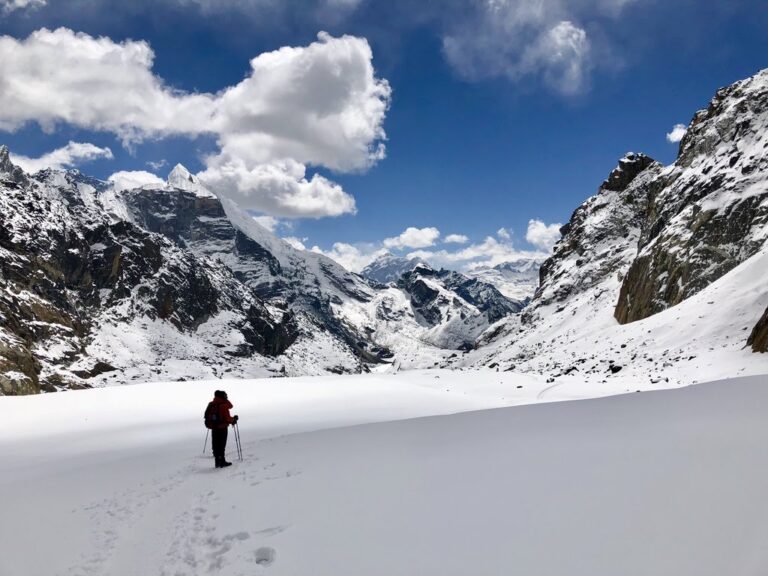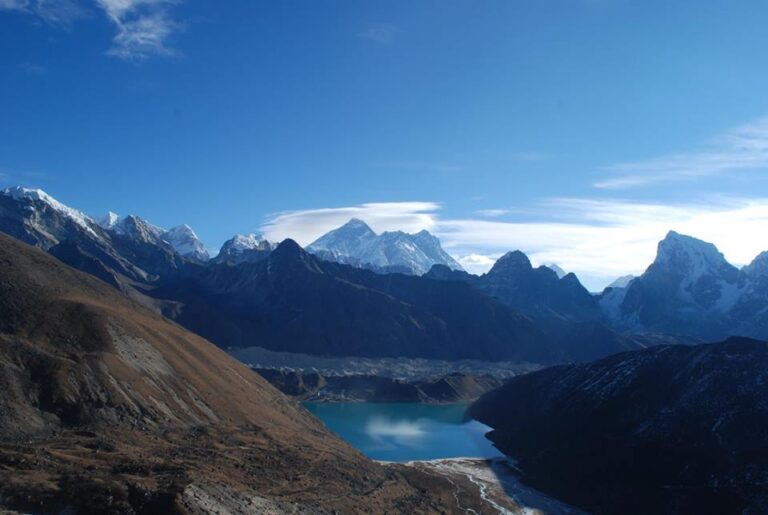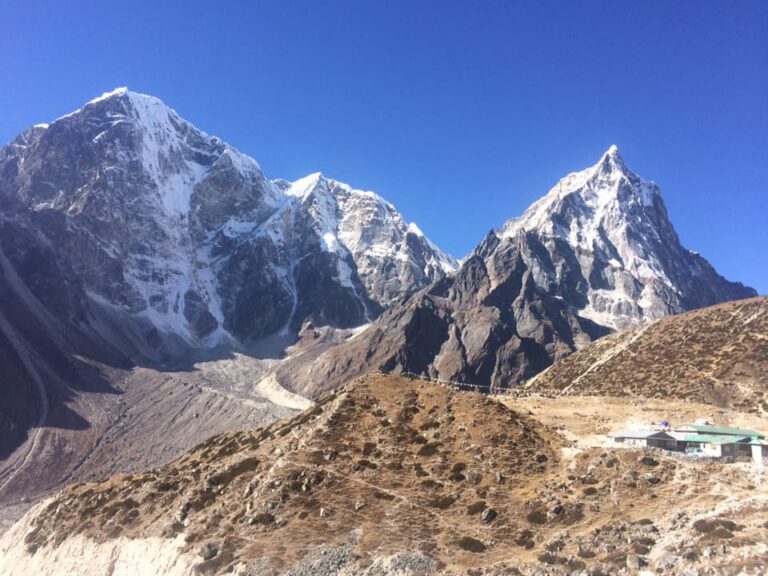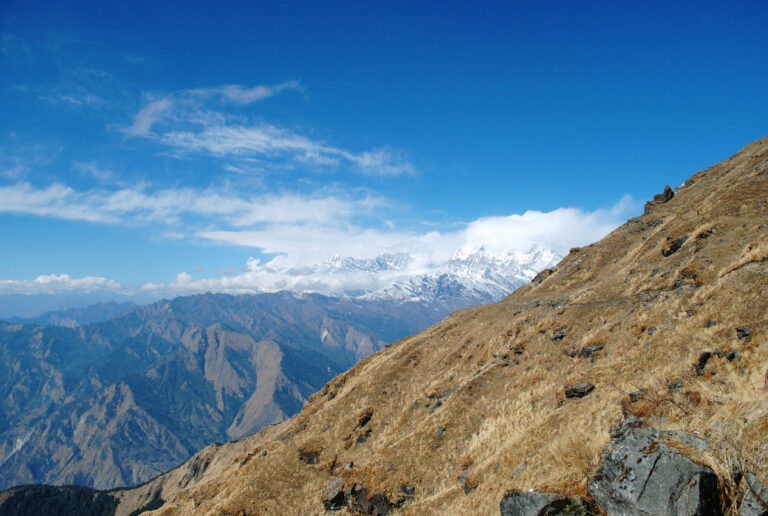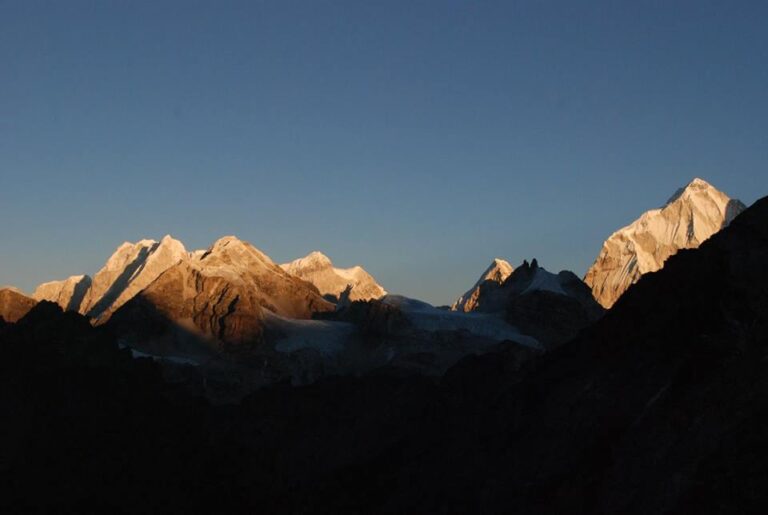Day 01-Fly to Lukla and hike up to Phakding village (2610m.a.s.l) – 4 hours walk-we will fly above the spectacular mountain view for 25 minutes then after breakfast in Lukla Bazaar we will head to Phakding village with the view of Kongde peak, Kusum Kangaroo and beautiful view of Dudh koshi River gorge. Along the trekking trail we will pass many villages, Monasteries, Stupa, prayer wheals, Mani walls and painted Buddhist mantra on the big rock. There are dozens of guesthouses in Phakding village and the restaurant serves us really delicious meal.
Day 02 –Trek from Phakding to Namche Bazaar (3440m.a.s.l) – 6 hours walk – we will head to Namche Bazaar pass by the Toktok, Chutawa, Monjo and Jorsalle village with the view of Thamserku peak, charms green Landscape and the huge rocky hills. The trail from Phakding to Larja dobhan is mostly easy walk due to flat trail. After Larja dobhan the trail gently ascend to the Namche Bazaar that may takes about two hours to get destination for today. There are more than 30 guesthouses in Namche bazaar.
Day 03-Acclimatization day -Normally, all trekkers stop in Namche Bazaar to get acclimatization so we will do sight trip to Everest view point which is located just above the Namche Bazaar and the view point command us to see magnificent view of Everest, Nuptse, Lhotse, Amadablam, Thamserku, Kongde peak and other snow-caved peaks.
Day 04-Trek from Namche Bazaar to Dole (4200m.a.s.l) – 6 hours walk -After two hours walk from Namche bazaar trekkers will reach in Sanasa village which is main junction point of to the Gokyo valley and Everest base camp. From here, trekkers should take left hand sight trail to get Mong danda that offers to the trekkers to see closer view of Amadablam and Taboche peak. From the Mong danda the trail is gently descend to the Phortse Tanga that may takes about one hour for the slow walker and might be 45 minutes for faster. There is a small basic guesthouse in Phortse Tanga. From here, trekkers have to turn to the left hand side to go Dole village and right hand side to the Phortse village. After two hours climb up through the forest of silver birch and bamboos, trekkers will be in Dole where 6 guesthouses are running for the internal and external tourist.
Day 05-Trek from Dole to Machhermo (4470m.a.s.l)-3 to 4 hours walk – today trekkers will head to Machhermo village with awesome view of Amadablam, Taboche, Cholatse and as well as far view of Cho-O which is 8201 meters and highest mountain of the Gokyo valley. Most of the time trekkers will walk on the gigantic grassy land so another attraction of the day would be the grazing yaks, horses and sheep. There are 6 guesthouses in Machhermo village and offers heated dining hall and comfortable bedrooms.
Day 06 – Trek from Machhermo to Gokyo Lake (4800m.a.s.l) – 4 hours walk – Trek from Machhermo to Gokyo Lake takes an approximately four hours but still would be little bit hard due to high elevation and lack of oxygen so requires walking slowly and drinks lots water. After 45 minutes walk from Machhermo appear a beautiful Lake called first lake and from there trekkers have to walk about two hours on the gradual up trail to get Gokyo lake where 7 guest houses are available just nearby the Gokyo lake.
Day 07-Sight trip to Gokyo-Ri view point 5360 meters – there are many sight trips around the Gokyo valley like day hike up to 5th lake, day trip to Renjola pass and sight trip to Gokyo-Ri peak but still sight trip to Gokyo-Ri view point is being popular than others because its commands to the trekkers to see magnificent view of Cho-Oyu, Gokyo lake, Cholatse peak, Cholo peak, Ngojumba glaciers and as well as the far view of Mount Everest and Makalu.
Day 08 – Trek from Gokyo Lake to Thame (4368m.a.s.l) – 7 hours walk – we will start our trek little bit earlier than previous days due to cross Renjola pass which is 5360 meters high. Begins of the morning; we will walk on the flat trail, beside the Gokyo lake for one and half hours then we will ascend an approximately two hours to get top of the Renjola. From the top of the Renjola, we can see mind blowing view of Cho-Oyu 8201 m, Everest 8848 m, Lhotse 8516 m, Cholatse 6440 m and stunning view of Gokyo Lake and Ngojumba glacier. After splendid view of high Himalayas, we will descends to the Lumde doing by downhill trail through the glacial moraines and spend a joyful night in Lumde village.
Day 09 – Trek from Lumde village to Thame village (3800m.a.s.l) -5 hours walk – we will trek down to the Thame village pass by Dinjung, Taranga and Yilajung villages through the moraines and along the ancient route used by the traders to transfer goods across Tibet via Nangpa-La pass. The trek of the day would be very pleasant due to see superb mountain views, sights of small monasteries and the view of Bhote Koshi River.
Day 10 – Trek from Thame to Namche Bazaar (3440m.a.s.l) – 5 hours walk – Trek begins along the Bhote koshi River pass by stumbling Chhortens, Stupa, Mani walls and monasteries with relishing panoramic view of snow-capped peaks. Most of the time we will walk through the forested trail of Juniper, pasture land so along the trail can be seen hundreds of grazing yaks, horses, Deer and as well as blue sheep and Himalayan Thar.
Day 11-Trek from Namche Bazaar to Phakding village (2610m.a.s.l) – 5 hours walk – begin of the morning we will walk downhill trail an about one hour to get Larja dobhan then rest of the trek to Phakding village is very pleasant walk due to walk through the forest with the view of green landscape and vista stunning view of Thamserku peak.
Day 12 –Trek from Phakding to Lukla Bazaar (2840m.a.s.l) – 5 hours walk – we will pass many Sherpa villages called Ghat, Thadokoshi, Chheplung and Chaurikharka with the view of Kusum kangaroo and Kongde peak. Along the trail we will see many Chhortens, Stupa, monasteries and Buddhist incantation, which are carved on the huge rocks of the center of the trail.
Day 17- Fly back to Kathmandu – early in the morning we will fly about 30 minutes to get Kathmandu valley. During the flight we will magnificent view high Himalayan ranges called, Annapurna, Dhaulagiri, Manaslu, Ganesh Himal, Gaurishankar Himal ranges including superb view of Mount Everest.
